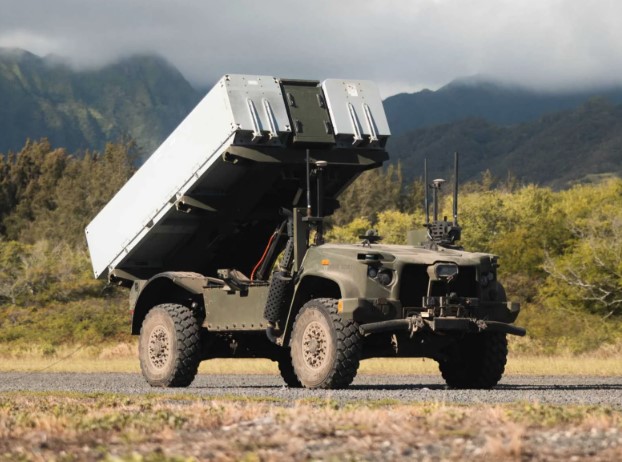By sending its powerful ship-sinking missile system, NMESIS, to a small group of Philippine islands in Luzon Strait, the US has taken a risk. These islands are close to China, and the action was performed when Chinese navy ships were nearby.
Missile System Lands on Key Philippine Island
The Navy-Marine Expeditionary Ship Interdiction System, or NMESIS, is a ground-based launcher used by the U.S. Marine Corps. It possesses two special Naval Strike Missiles. These weapons can hit ships more than a hundred miles distant.
The United States and the Philippines conducted military drills that included this deployment. The exercises, known as Exercise Balikatan 2025, took place between April 21 and May 9. The NMESIS system was moved to Batan Island by the US military as part of the training. This island is located in the Luzon Strait, a narrow body of water that serves as a key pathway for Chinese naval ships moving into larger oceans.
The Philippines has become a very important country for America’s military plans in the Pacific region. Along with Japan and Taiwan, it is part of what’s called the “First Island Chain.” This chain of islands forms a sort of barrier that limits China’s naval activities in the Pacific Ocean.
The U.S. military posted images and videos of the NMESIS launcher being flown to the Batanes Island chain aboard a big KC-130J plane. The Philippines’ main island, Luzon, is to the north of this collection of islands. The operation was part of another military exercise called Maritime Key Terrain Security.
KAMANDAG 9 Brings in New Live-Fire Drills
After the Balikatan drills, another joint exercise began. This one is called Exercise KAMANDAG 9. The name “KAMANDAG” comes from a Filipino phrase that means “Cooperation of Warriors of the Sea.” This exercise started on a Monday and runs until June 6. It involves military forces from five countries: the United States, the Philippines, Japan, South Korea, and the United Kingdom.
Unlike the Balikatan exercise, where the NMESIS missiles were not actually fired, the KAMANDAG 9 drills might include live firing of the weapon. This will only happen if the weather is good enough, according to news reports in the Philippines.
The KAMANDAG exercise is not new. It has taken place every year since 2016. It is meant to improve teamwork and fighting skills between the U.S. and Philippine marine forces. This year’s event includes many types of activities like live-fire drills, amphibious landings, littoral maneuvers, and disaster response training. Teams are also sharing knowledge on different topics, making it a full-package war game.
Philippines Set to Receive Powerful F-16 Jets: High-Tech Combat Strength or High Price Tag?
The goal of these drills is to protect important sea areas and islands. These places are known as “key maritime terrain” and are very important for keeping the sea routes safe. The U.S. military said that these drills show how important it is to work together to protect the sea and keep the region peaceful.
The NMESIS system’s introduction in this region has drawn attention from all around the world. It shows a clear message about the growing focus on maritime security near China. The fact that these high-tech missiles are now part of drills near Chinese waters makes this move especially significant.
Location Highlights Strategic Tension
The Batanes Islands are small but important. They sit near the Luzon Strait, a waterway used by naval ships traveling from China into larger oceans. Placing the NMESIS system here means the U.S. can watch and respond quickly to any naval movements in this area.
During the exercise, the NMESIS system was moved by air and positioned on the island. This shows that it can be deployed quickly and doesn’t need a large base. Its missiles are known for their precision, making it a strong defense tool.
Even though the NMESIS was not fired during the earlier Balikatan drills, it may be used in live-fire training during KAMANDAG 9. That would mark one of the first times the system has been tested in the region under real training conditions.
Philippine Navy Could Receive U212 NFS Submarines Under Fincantieri-TKMS Cooperation Agreement
These missile deployments are part of a larger set of activities happening across the Philippines during the KAMANDAG 9 exercise. Other drills include defending the shoreline against enemy landings and working together during natural disasters. Experts from each country also share their knowledge with others during this exercise.
One more U.S. missile system, known as the Mid-Range Capability, has also been present in the Philippines since April last year. It was originally brought in for drills, but it has stayed there longer.
The presence of these weapons so close to China’s borders highlights the ongoing military activities in the Indo-Pacific region. These moves come during a time when several countries are trying to strengthen their positions and alliances.
The drills show how modern technology like NMESIS is now part of military partnerships, especially between the U.S. and the Philippines. With the exercises happening across several islands and involving multiple countries, this period marks a time of high activity in the region.

